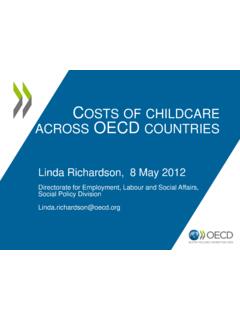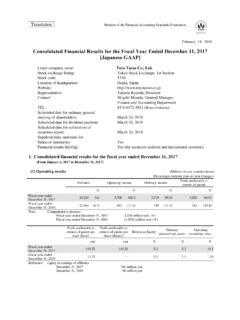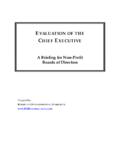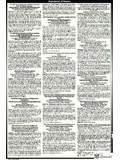Transcription of Corporate Taxes and Intellectual Property: Simulating the ...
1 Corporate Taxes and Intellectual property : Simulating the effect of Patent Boxes IFS briefing Note 112 Rachel Griffith Helen Miller Martin O Connell Institute for Fiscal Studies, 2010 1 Corporate Taxes and Intellectual property : Simulating the effect of Patent Boxes* Rachel Griffith,a Helen Millerb and Martin O Connellc Executive summary The introduction of Patent Boxes policies that sharply reduce the rate of corporation tax applied to income derived from patents in the Benelux countries is likely to reduce the share of new patents held in the UK by approximately 30%. The introduction of a UK Patent Box would more than double the UK s share of new patent holdings, more than offsetting this reduction. The effect of these reforms on tax revenue would be substantial; the UK could expect to see revenue from patent income halved.
2 The interaction of Patent Boxes and Controlled Foreign Company (CFC) regimes could have an important impact on UK revenues; a UK CFC regime that effectively captured patent income held in Patent Box countries could mitigate some of the negative impact on revenues. The UK Patent Box was announced as a policy to promote innovative activity in the UK. The policy is poorly targeted at the types of activities where government intervention is justified and gives firms little additional incentive to conduct research activities in the UK. Under a UK Patent Box, a significant amount of real activity would need to accompany newly created patent income in order to outweigh the loss in revenue. * The authors would like to thank the Economic and Social Research Council (ESRC) for financial support under the Centre for the Microeconomic Analysis of Public Policy (CPP) at the Institute for Fiscal Studies and the specific grant, RES-000-22-4268.
3 A Institute for Fiscal Studies and University of Manchester, b Institute for Fiscal Studies, c Institute for Fiscal Studies and University College London, Institute for Fiscal Studies, 2010 21. Introduction The tax treatment of Intellectual property is currently in the spotlight. In 2009, the UK moved to an exemption system for the taxation of foreign-source income. Firms can now remit most forms of income earned offshore to the UK without attracting an additional UK tax liability. This brings the UK into line with most other European countries and could help UK firms make more productive use of their assets, since they will no longer face additional taxation when investing in countries with a tax rate lower than the UK However, how offshore income from Intellectual property is treated remains an unresolved issue.
4 On the basis of neutrality basically, the notion that the tax system should not distort investment decisions it is desirable for the tax system to treat the use of an idea offshore the same as the use of physical goods. However, the income from Intellectual property is highly mobile and can be easily separated from real activity. The government is therefore concerned that firms might seek to hold Intellectual property offshore to avoid tax. The previous government made proposals for reforms to the Controlled Foreign Company (CFC) regime the set of rules that determine how offshore mobile income is taxed; see Box 1. These proved contentious and the current coalition government inherited an ongoing consultation process that is considering the anti-avoidance legislation that is needed to prevent firms locating income offshore for the sole purpose of avoiding tax.
5 A key aspect of these reforms will be how Intellectual property is 1 For further discussion, see M. Gammie, R. Griffith and H. Miller, Taxation of companies foreign profits , in R. Chote, C. Emmerson, D. Miles and J. Shaw (eds), The IFS Green Budget: January 2008, Commentary 104, Institute for Fiscal Studies ( ). 2 A 2010 discussion document sets out the objective of exempting Intellectual property that is actively managed offshore while mitigating the risk that UK tax can be avoided through the artificial movement of [ Intellectual property ] into a low tax jurisdiction . See section 4 of HM Treasury and HM Revenue and Customs, Proposals for Controlled Foreign Companies (CFC) Reform: Discussion Document, January 2010 ( ). Institute for Fiscal Studies, 2010 3 Box 1.
6 CFC regimes Broadly, countries operate either an exemption or a credit system for the taxation of foreign-source income. Under a credit system, income earned in offshore subsidiaries is liable for additional tax when remitted back to the home country, with a credit for tax already paid. Under an exemption system, income in offshore subsidiaries is exempt from further taxation when it is remitted home. Within both systems, many countries operate rules that aim to prevent firms from holding profits in low-tax jurisdictions in an attempt to avoid taxation in their home country, known as Controlled Foreign Company (CFC) regimes. CFC legislation basically defines the set of subsidiaries that are located offshore in low-tax countries and deemed to be subject to tax in the parent firm s residence country.
7 Most regimes focus on identifying passive income income resulting from non-commercial activities which can be divorced from real activity and easily moved for tax purposes; this usually includes patent royalties. Countries that operate a CFC regime include Denmark, Finland, France, Italy, Norway, Spain, Sweden and the UK. At the end of 2009, the previous government proposed the introduction of a Patent Box . In November 2010, the coalition government announced that a Patent Box will be introduced in 2013. This reform will reduce the rate of corporation tax applied to the income derived from patents to 10%. Precise details will form part of a broader consultation on the taxation of Intellectual The UK proposal follows the introduction of Patent Box regimes in Belgium, Luxembourg, the Netherlands and The income derived from Intellectual property is highly mobile and anecdotal evidence suggests that multinational firms are increasingly choosing to hold Intellectual property (and the resulting revenue stream) in subsidiaries outside of the home country.
8 For example, The Guardian recently ran a two-week report on companies tax practices, highlighting that firms [move] the rights to their Intellectual property to tax havens 3 See HM Treasury, Corporate Tax Reform: Delivering a More Competitive System, 2010 ( ). 4 Ireland also operates a system whereby certain patent royalties are tax exempt. Qualifying patents are required to have had an element of the underlying research or processing carried out in Ireland. Institute for Fiscal Studies, 2010 4allowing them to reduce their UK-based profits and hence their British tax bills by paying royalties to the subsidiary in the tax haven .5 In light of these issues, there is considerable interest in understanding how Taxes affect firms choices over where to hold patents for tax purposes.
9 In a forthcoming paper,6 we estimate the responsiveness of European multinationals patent holdings to Corporate Taxes . We consider firms decisions over which subsidiary to hold each of their patents in. This choice is crucial for determining the jurisdiction under which the patent income will be We consider Taxes in the country where Intellectual property is held as well as interactions with Taxes in the home country via CFC regimes. We simulate the effects of introducing Patent Boxes, in terms of both the location of income and the resulting government revenues, under alternative assumptions about how CFC regimes will interact with Patent Boxes. This briefing Note summarises the main results from that paper (Griffith, Miller and O Connell, 2010) and discusses our findings in relation to the current policy issues.
10 2. The location of patent income and Corporate Taxes We estimate an econometric model that captures the impact of Corporate Taxes on the location of patent holdings; we pay careful attention to controlling for potentially confounding observed and unobserved factors. We consider the choices of European firms over which country out of 14 European countries and the US8 to hold their patent applications in. Perhaps unsurprisingly, we find that if a country lowers its Corporate tax rate, firms are more likely to locate their Intellectual property in that location. We also find a large variation in the responsiveness of location 5 See Offshore and out of reach to the Revenue , 6 R. Griffith, H. Miller and M. O Connell, Corporate Taxes and the location of Intellectual property , Institute for Fiscal Studies, mimeo, 2010.















